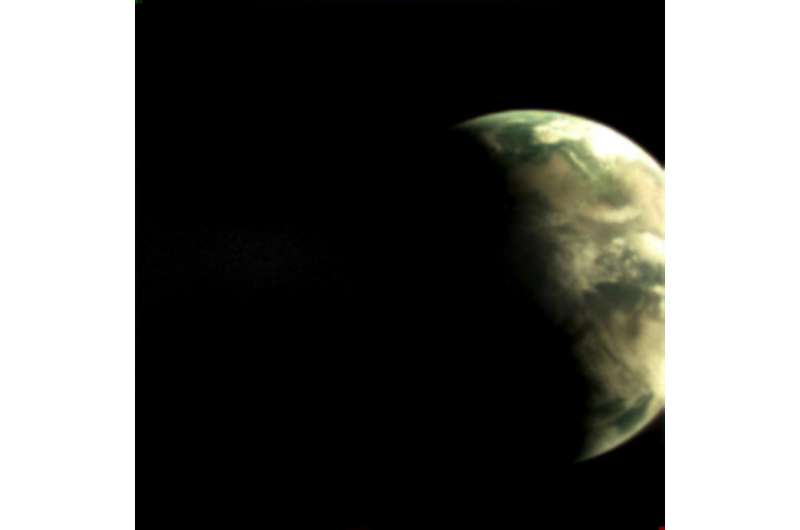This article has been reviewed according to Science X's editorial process and policies. Editors have highlighted the following attributes while ensuring the content's credibility:
fact-checked
trusted source
proofread
Image: Earth through a 2-mm lens

A distant, partly shadowed Earth, as viewed from a 6,000-km-altitude orbit. This unusual image was acquired using an extremely miniaturized camera about the size of the edge of a 20 cent coin—a miniscule technology experiment aboard ESA's shoebox-sized TRISAT-R CubeSat.
TRISAT-R project manager Iztok Kramberger of the University of Maribor explains: "This tiny camera measuring less than two cubic millimeters in size took a picture of an object measuring approximately one trillion cubic kilometers—our beautiful planet Earth—from thousands of kilometers away."
A CubeSat made from three standardized 10-cm boxes, TRISAT-R is Slovenia's second space mission, which flew on Europe's inaugural Vega-C launch last year to the relatively inhospitable environment of medium-Earth orbit, at 6000 km up. The mission's orbital path takes it right through the heart of the ionosphere—an electrically active layer of Earth's atmosphere—as well as the inner Van Allen radiation belt.
This allows TRISAT-R to test a suite of radiation-detection payloads. In addition, the TRISAT-R team embarked a pair of tiny cameras, with lenses made from clear borosilicate glass to provide limited radiation resistance, mounted directly onto 320x320 pixel image sensors. See one here.
Dr. Kramberger adds, "The resulting picture of Earth is very low resolution as these highly miniaturized cameras were not intended to perform terrestrial imaging, plus TRISAT-R satellite employs magnetorquers for its attitude control, so that precision pointing is difficult to achieve.
"Our main interest has been in capturing examples of the 'Black Sun effect'—commonplace in terrestrial digital imaging, where over-saturation of pixels can cause very bright areas to appear dark. We have succeeded in these investigations, but have also been lucky enough to acquire images like these."
ESA supported the manufacturing, assembly and testing of TRISAT-R through the "Fly" element of its General Support Technology Program, opening up in-orbit demonstration opportunities for European companies.
Located in its unique and challenging orbit, TRISAT-R's commissioning phase is due to conclude later this month, encompassing 16 months of successful in-orbit operations.
Provided by European Space Agency




















